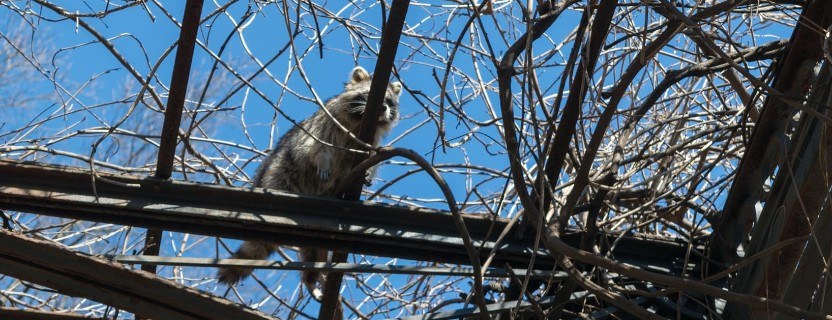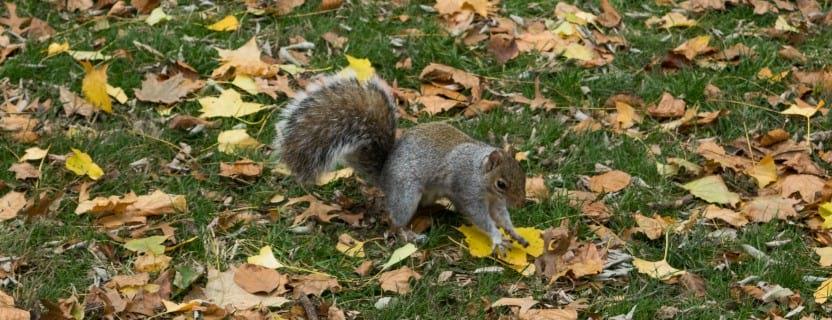Correct Answer: Pekin Ducks
There are many animals that do call Central Park home! New York City may be known as a concrete jungle, but the Park offers plentiful habitats for many species who live here year-round.

Pekin ducks are domestic animals and are not suited to survive in the wild! Like all domestic ducks, they have large bodies and small wings, rendering them flightless. They also don’t have the natural instincts to forage for food or defend themselves from predators, unlike their wild counterparts. (If you see an animal that doesn’t seem to belong, contact a Park official or a licensed rehabilitator who can help get the animal to safety.)
But there are many animals that do call Central Park home! New York City may be known as a concrete jungle, but the Park offers plentiful habitats for many species who live here year-round.
Raccoons

Raccoons are versatile New Yorkers, happily making their homes both inside and outside of the parks. Central Park is a perfect habitat for these curious creatures, who nest in tree cavities, hollow logs, rock crevices, and other cozy spaces. Although it’s commonly believed that raccoons are only active at night, it’s completely normal for perfectly healthy raccoons to be out and about at all hours. If you do spot a raccoon in the daylight, they should not be considered dangerous or assumed to carry rabies. Just keep a respectful distance and continue on your way. Remember, they live here too!
Red-tailed Hawks

The sight of a red-tailed hawk soaring above the Park is always cause for excitement. This natural predator mates for life, and you can often find hawk couples soaring together in January, preparing for nesting season (which begins around mid-March) and defending their territory from other raptors. During nesting, they’ll gather branches and sticks to build or maintain their nest in time for egg-laying.
Eastern Gray Squirrels

Squirrels are frequently the first creatures to greet Park-goers. These energetic animals have an incredible sense of smell; they bury many nuts and seeds (sometimes over 300 acorns for one squirrel) throughout the year and are later able to retrieve them by scent. The nuts and seeds that are not reclaimed by squirrels help to nourish trees and forests — creating a true symbiotic relationship with their habitat.
Mallard Ducks

Mallards, and wild ducks in general, are extremely resourceful at finding food. During breeding season, they feed on animal matter, including insects, worms, small fish, and aquatic invertebrates; when migrating, they mostly eat seeds. There’s no need to supplement their diet! Food items commonly given to ducks, like bread or crackers, are low in necessary nutrients and cause malnourishment, disease, and injury.
Turtles

Turtles are an inevitable summer sight, resting along the shores of Central Park’s water bodies. But during the winter, it’s as though they just disappear. But where to? Central Park’s turtles bury themselves under mud at the bottom of frozen water bodies. There, they hibernate, conserving energy until the water thaws and it’s time to head up to warmer temperatures.
Visit our magazine to learn more about Central Park and its residents!